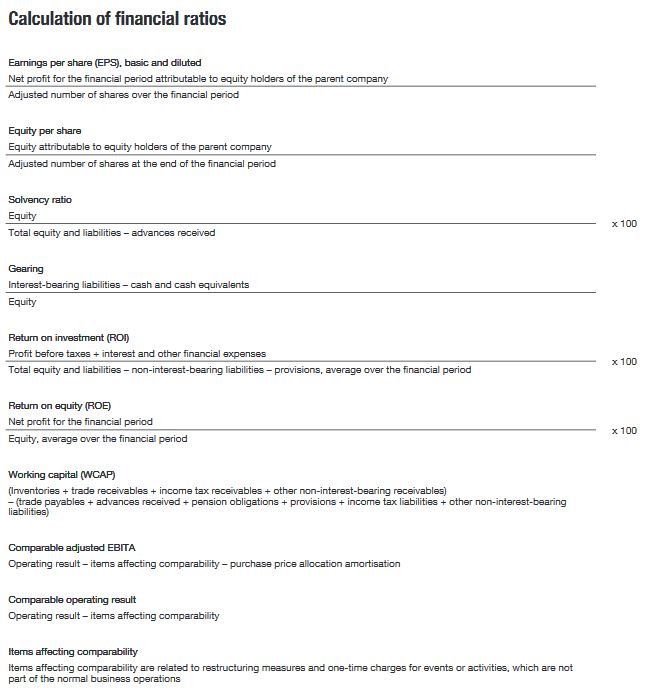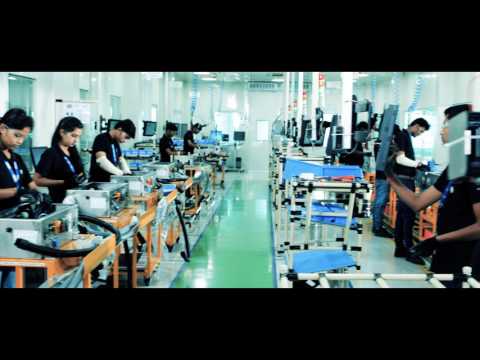
In most systems, there will be a requirement to connect the drip pan/condensate tray to condensate pipework that will remove any water generated from the cooling process and dispose of it, usually to drain. According to ulrich Budde, sales Manager for Kampmann in southern Germany and Austria, the key factors for them were the low noise level of the motor and the high level of control in the lower speed range. Daikin is devoted to overcoming the evolving challenges of air while creating better, more sustainable outcomes for customers and communities.
The use of this strategy is required by Title-24 and ASHRAE 90.1 for system that have DDC to the zone level. The static pressure setting in the main supply duct is reduced to a point where one VAV box damper is nearly full open. This would require that the VAV box actuators can report their damper position, best performed with an analog output.
• fan coil unit vs vav systems are very cost effective from a chilled-water and heating-water-pumping perspective. Because the unit transfers heat to the space using forced convection, the coil heat transfer area required is reduced as compared to a chilled beam. The reduction in coil heat transfer surface area results in lower coil water side pressure drop and lower pumping energy. In this article, we will look at the difference between induction units and fan coil units and how they play an essential role in HVAC systems. The required space temperature will be set manually and then measured by the sensor.
- There eventually becomes a temperature where efficiency and reliability of the back up heat is better than the heat pump so back up heat is depended on for these times.
- VAV systems achieve their full potential in applications where there a multiple zones with variable load.
- A VAV box uses air supplied from a remote AHU, normally at a temperature lower than the room temperature.
Unlike CAV, the cold water flow supplied to the fan coil unit is kept constant. VAV systems achieve their full potential in applications where there a multiple zones with variable load. • The four-pipe fan coil unit system is cost-effective from a chilled water and heating water pumping perspective.
What is a VAV system in HVAC?
It doesn’t seem to show up when visualized in OS or numerically in the simulated results. For a better comfort, reheat on each VAV box is commonly used for tighter zone control. When the VAV boxes are connected to a building automation system that monitors the function and status of the boxes there are various options for control. Other components used on various other versions of the VAV box, such as fan powered boxes would include fans and filters.
Single duct terminal units consist of a housing and a damper with an actuator. This damper is controlled by airflow sensors within the unit along with a thermostat in the space. VVT systems require bypass ducts between the supply and return ducts at the unit. For retrofits to existing equipment, this means having headroom available for the bypass duct. Both VAV and VVT systems require ceiling space for terminal boxes and straight lengths of ductwork. For low-rise buildings with flat roofs, rooftop units are more attractive than carving out a mechanical room for a central plant, leaning the design towards a VVT system.
RE: VAV vs FCU system
At malls each occupant likely has their own heating/cooling system for their space and is likely stand alone. Larger buildings under single management may have central heating/cooling plant and then heated or chilled water or some antifreeze media is pumped to fan coil units where heat is exchanged to condition the space. A fan coil unit is generally utilized in spaces like hotel rooms and commercial buildings to acclimatize the HVAC systems. It requires less space and generates higher cooling and heating output.
The fan rotates when the magnetic flux created by theCapacitor is created. The ceiling fan usually has two parallel series of capacitors in it. WGI is a national design and professional services firm leading in technology-based solutions for the construction of public infrastructure and real estate development. Energy Modeling for Heating/Cooling Systems with Honeybee will be posted in the next few weeks and contain a lot information that helps explain the difference in energy use.

A fan coil unit , also known as a Vertical Fan Coil-Unit , is a device consisting of a heat exchanger and a fan. FCUs are commonly found in HVAC systems of residential, commercial, and industrial buildings that use ducted split air conditioning or with central plant cooling. FCUs are typically connected to ductwork and a thermostat to regulate the temperature of one or more spaces and to assist the main air handling unit for each space if used with chillers. The thermostat controls the fan speed and/or the flow of water or refrigerant to the heat exchanger using a control valve. Typically, the systems use a package rooftop unit for their central air source and heating/cooling capacity to the VVT boxes. Each box modulates its volume control damper in response to the zone thermostat.
This will usually result in a unit that is oversized enough there are other problems or inefficiencies. There eventually becomes a temperature where efficiency and reliability of the back up heat is better than the heat pump so back up heat is depended on for these times. A VAV box in a HVAC system is meant for energy conservation by controlling the volume of conditioned air supplied.In contrast, the earlier HVAC systems used conditioned supply air of constant volume. Variable Air Volume, or VAV, is one of the most common types of HVAC systems used in large commercial buildings today. A typical system is usually comprised of a large air handler, central ductwork system, and a relatively large equipment room.
VAV vs FCU system
However, because this DOAS air is only the minimum that is needed for ventilation (not the amount of hot/cold air needed to heat/cool the whole space), the energy spent in this respect is a lot less. VVT systems use a time-share system between heating and cooling when both are required from the same unit. This is particularly important during times of fluctuating weather or for buildings that need interior cooling during heating season. VAV systems, with their constant temperature supply, can satisfy its zone regardless of what neighbouring zones need by simply varying the airflow. When VAV boxes start closing their dampers because they need less cooling an increase in pressure will occur. When the static pressure in the supply duct increases due to the VAV boxes closing their inlet dampers the static pressure in the main supply air duct increases.

In areas of the world where there are legally enforceable https://1investing.in/ efficiency requirements for Fan Coils , DC Fan Coil Units are rapidly becoming the only choice. The electrical loading is small, consisting only of a fan and usually a controller that operates valves to control the flow of heated or chilled water. William P. Ljungquist (), PE, LEED AP, is regional engineering manager, architecture engineering, for Atkins. The energy consumption comparison in the article was produced by Atkins North America for the higher education housing facility using a four-pipe fan coil system. • Because of the unit fan, the system consumes more fan energy as compared to a chilled beam system, which has no terminal unit fan.
Fan Coil Unit
The same is true for the two zones between corner spaces on the North exposures, Zone #2. If you had interior zones they would be separated from any exterior zone because interior zones are often exclusively in cooling mode due to internal heat gains and the lack of heat loss from any exterior surfaces. The VAV box regulates the flow to a zone in relationship to the demand of the temperature sensor in the space. VAV box damper position versus zone temperature and reheat status to assure damper minimum setting before reheat application. Fan – some VAV boxes are equipped with fans to supplement ducted flow rates or supplement/displace reheat needs .
Follow the guidelines in the equipment manufacturer’s maintenance manuals. This section describes how temperature and airflow are adjusted according to load. It’s just a mechanical device used to control the air flow of the duct.There is a actuator which is connected to the shaft of the damper.So we can control the airflow by varying the voltage of actuator. The output from an FCU can be established by looking at the temperature of the air entering the unit and the temperature of the air leaving the unit, coupled with the volume of air being moved through the unit. This is a simplistic statement, and there is further reading on sensible heat ratios and the specific heat capacity of air, both of which have an effect on thermal performance. Other variants utilize a chilled, or heated water loop for space cooling, or heating, respectively.
For all VAV maintenance, it is important to follow the manufacturer’s recommendations. Proper maintenance should only be performed by trained and qualified personnel. The checklist below provides recommended actions and frequency by VAV component type. This checklist does not supersede maintenance recommendations from the equipment manufacturer, nor is it a replacement for contracted O&M or warranty services.
During moderate weather, the outside air might be at the right temperature to supply to the zones, allowing the boiler and chiller to shut down, saving energy. If in one zone, the VAV box damper is starting to close, then there will be an airflow increase in the system. The building controller will modulate the fans to maintain the differential pressure transmitter at his setpoint. • Because the entering chilled water temperature must be several degrees above the space dew point, the water side delta T is generally significantly lower than a fan coil unit or variable volume air handling unit delta T. This results in increased pumping energy for the DOAS terminal system when compared to a fan coil unit system or variable air volume system. Speed control of the fan motors within a fan coil unit is partly used to control the heating and cooling output desired from the unit.
VAV boxes have a role similar to the duct heaters used in a CAV system. Instead of reheating air according to the needs of each individual zone, the airflow is controlled while keeping temperature constant. Jones then re-ran the calculations on the assumption that the engineers had been cautious in their choice of units.
FCU fan coil unit is generally a fan, a coil, (heating and/or cooling) and a vent to exhaust the conditioned air. Different from an air handler unit in that it generally doesn’t use duct work. A VAV is a valve that controls the amount of flow in the downstream ducting. Often the incoming air is conditioned and then the VAV has supplemental heating or coiling coils that “boost” the temperature for that section of duct. This cooling down to wring out humidity also often happens in DOAS systems that come with FCU systems.

